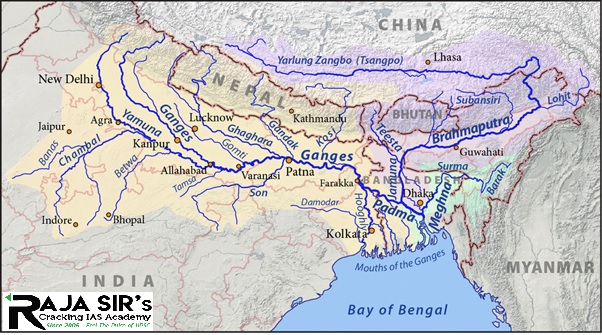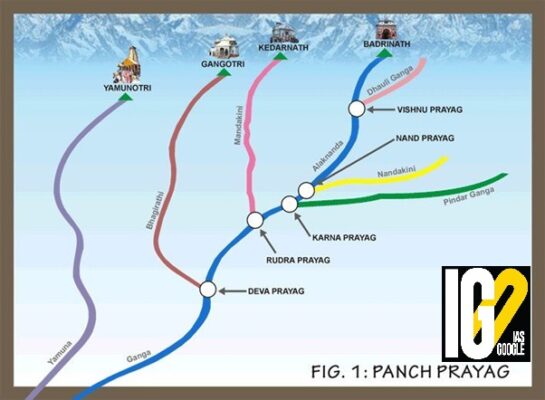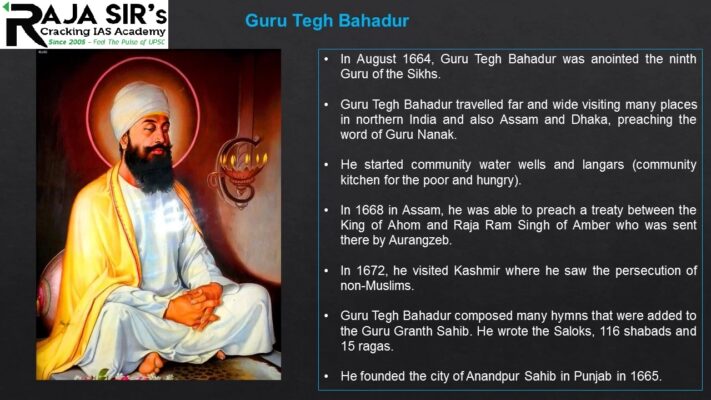- Home
- Prelims
- Mains
- Current Affairs
- Study Materials
- Test Series
Dec 11, 2021
IMPORTS MADE UP 86% OF INDIA’S GOLD SUPPLY FROM 2016-2020, SAYS WGC
The World Gold Council (WGC) has released a report on India’s imports of gold supply between 2016-2020.
Highlights:







- Imports made up 86% of India’s gold supply between 2016-2020.
- Since 2012, India has imported 6,581 tonnes of gold averaging 730 tonnes per annum.
- It imported 377 tonnes of gold bars and ore from over 30 countries, of which 55% came from two Switzerland (44%) and the UAE (11%).
- Gold ore imports made up 30% of the total official imports of gold. Gold dore is a semi-pure alloy that is refined for additional purification.
- Refined gold bars are made from bars with gold doors.
- Duty benefits led to an expansion of refining capacity as the number of refineries grew from three in 2012 to 32 in 2020.
- With lower duty on gold ore, its share of gold imports has increased from 11% in 2014 to 29% in 2020.
- It is the market development organisation for the gold industry.
- Founded: 1987
- Headquarters: United Kingdom
- Aim: To stimulate and sustain demand for gold, provide industry leadership and be the global authority on the gold market.
- The council has 22 Members having operations in over 45 countries including China, India, UK and the US.
- It acts as a commercial innovator and a trusted adviser to business and government leaders across the world.
- To ensure gold mining is responsibly undertaken, with measurable economic benefit to the countries in which they operate.
- Enhancing emerging geographic and sector markets for gold.
- Provide analysis and create products that drive step changes in demand for gold.
- Gold and currencies are co-related.
- The value of a country’s currency has a strong connection with the gold reserves of that country.
- In the 20th century, gold was used to support fiat currencies or legal tender of a country.
- Countries had to back their printed fiat currencies with an equal amount of gold in their reserves.
- They weren’t allowed to print the currencies if they did not have gold up to the same value.
- The United States of America used gold standard till 1971 after which it was discontinued.
- Gold standard is a method of determining the value of a country’s currency with the help of gold.
- The value of a country’s currency is deciphered by setting a fixed rate for buying and selling gold.
- Example: if India starts using gold standards and fixes the gold rate today at Rs 25000 per gram, the value of Indian rupee will be 1/25000th of one gram of gold.
- Offers reliability in stabilizing gold prices
- Prevents inflation and deflation
- Helps to stabilize the country’s economy
- Helps to establish trust for successful global trade.

- The import and export of a country impact the value of its currency.
- If the value of a country’s export is more than its import, it will strengthen its currency.
- If a country import way more than what it is exporting then the value of its currency will fall.
- Similarly, a country that exports gold will witness an increase in the value of its currency with the rise in the gold rate today as it will increase the value of the country’s exports.
- Example: The value of Indian rupee will fall if there is an increase in the gold rate today as India is one of the top importers of gold in the world.
- Importing gold can also lead to inflation in the country.
- If the central bank of a country imports gold, it influences the demand and supply of fiat currency in the country.
- This is because central banks print additional fiat currency to purchase gold from other countries.
- This would lead to a surplus supply of currency causing inflation in the country.
- Example: If the Reserve Bank of India imports gold, it will result in inflation in India.
- Purchase of gold by investors is a solution to hedge inflation. Investors prefer to buy gold at the time of inflation.
- This is because gold is considered more stable and retains value much better than fiat currencies.
- Thus, people with more gold have a better chance of dealing with inflation and feeble fiat currency.
- Gold does not always adversely impact the value of a fiat currency.
- An industry that uses gold for production can create an increase in its demand leading to a rise in the gold rate today.
- Example: If there is an increase in the demand for gold by the jewellery manufacturing industry in southern India, it does not mean a lower value of Indian rupee even though it resulted in the rise of gold rate in Kerala.
- The value of Indian rupee is determined in accordance with the demand and supply of the US Dollar.
- If there is an increase in the demand for the US dollar in the forex market, the value of the dollar against Indian rupee will appreciate.
- This happens when India imports more items from the US than the number of items exported from India.
- Thus, the value of the US dollar appreciates against the Indian rupee.
- Similarly, if the US dollars are exchanged for Indian rupees to buy products from Indian exporters, the value of Indian rupee will appreciate and the dollar will depreciate.
- Rapid human pressure
- Untreated municipal and
- Industrial sewage
- Climate change
- The Gange is the biggest river in the Indian subcontinent in terms of water flow.
- Length - 2,510 km.
- Origin - Western Himalayan Ranges in the state of Uttarakhand.
- The followers of Hindu religion regard the Ganges to be the most sacred of all the rivers in India.
- The river also has significant historical values a number of colonial or royal capitals like Kannauj, Patliputra (modern day Patna), Allahabad, Kara, Baharampur, Murshidabad, and Kolkata are situated on the riverbanks of the Ganges.

- Left tributaries - Karnali, Mahakhali, Gandak, Koshi (Kosi), Ghaghra, and Damodar
- Right tributaries - Yamuna, Son, Mahananda, Chambal
- Loharinag Pala Hydro Power Project (NTPC)
- The project is situated on the Bhagirathi tributary in Uttarkashi district in Uttarakhand.
- Tapovan Vishnugad Hydroelectric Power Project (NTPC)
- Lata Tapovan Hydroelectric Power Project (NTPC)
- Maneri Bhali Hydro Power Project (UJVNL)
- Maneri Tiloth Hydro Power Project (UJVNL)

- Fauna in Gangetic Plain: wild Asian elephants, Bengal tigers, Indian rhinoceros, barasinghas, sloth bears etc.
- Fish: 350 fish species live in the entire Ganges drainage, including several endemics.
- Ex: Catla, golden mahseer, tor mahseer, walking catfish.
- It also has freshwater Ganges River dolphin which has been declared India's national aquatic animal.
- Aim: To ensure abatement of pollution and rejuvenation of the river Ganga by adopting a river basin approach.
- It implemented by National Mission for Clean Ganga.
- Sewerage Treatment Infrastructure
- River-Surface Cleaning
- Afforestation
- Industrial Effluent Monitoring
- River-Front Development
- Bio-Diversity
- Ganga Gram
- No line of succession: There is no immediate line of succession envisaged for the CDS.
- Although there is an unofficial Vice Chief of Defence Staff, who is a three-star officer.
- Now Cabinet committee on security (CCS) will decide who will take the responsibility of
- CCS is the final decision-making body on senior appointments in the national security apparatus, defence policy and expenditure, and generally all matters of India's national security.
- The CCS is chaired by the Prime Minister of India.

- CDS is the military head and chairman of the Chiefs of Staff Committee of the Indian Armed Forces.
- He is the senior-most and highest-ranking uniformed officer on active duty in the Indian military.
- The first Chief of Defence Staff was Bipin Rawat.
- He is a four-star officer selected from among the serving officers of the Indian Armed Forces.
- A gazette notification issued by government set 65 as the maximum serving age for the CDS.
- The creation of a CDS was suggested almost two decades ago by the Kargil Review Committee (KRC).
- KRC was headed by K Subrahmanyam, recommended the appointment of a CDS as a means to provide single-point professional military advice to the political leadership.
- To head the Department of Military Affairs in Ministry of Defence and function as its Secretary.
- To act as the Principal Military Advisor to defence minister on all Tri-Service matters.
- To function as the Permanent Chairman of the Chiefs of Staff Committee.
- To administer the Tri-Service organizations/agencies/commands.
- To be a member of Defence Acquisition Council chaired by defence minister.
- To function as the Military Advisor to the Nuclear Command Authority.
- To bring about jointness in operation, logistics, transport, training, support services, communications, repairs and maintenance, etc of the three Services.
- To ensure optimal utilisation of infrastructure and rationalise it through jointness among the Services.
- To implement Five-Year Defence Capital Acquisition Plan and Two-Year roll-on Annual Acquisition Plans, as a follow up of Integrated Capability Development Plan.
- To assign inter-services prioritisation to capital acquisition proposals based on the anticipated budget.
- To bring about reforms in the functioning of three Services to augment combat capabilities of the Armed Forces by reducing wasteful expenditure.
- The dual-hatted role refers to the two hats the CDS wears: one of the permanent Chairman of the Chiefs of Staff Committee and the other of the head of the Department of Military Affairs (DMA).
- The former is a military role while the latter is a role in the government.
- As per the gazette notification issued by the government, the Department of Defence — headed by the Defence Secretary — will be responsible for the “defence of India and every part thereof.
- CDS will not exercise any military command, including over the three service chiefs

- Rajagopalachari:
- Chakravarti Rajagopalachari, popularly known as Rajaji or C.R., is also known as Mootharignar Rajaji.
- He was an Indian statesman, writer, lawyer, and independence activist.
- He was born in 1878 in Tamil Nadu.
- He was an ardent supporter of Gandhi.
- He participated in Gandhi’s Non-Cooperation Movement and was also jailed.
- He opened his own ashram to promote Gandhi’s principles of Hindu-Muslim harmony and the abolition of untouchability.
- He was also a proponent of khadi.
- He became the editor of Gandhi’s newspaper, Young India.
- He was described by Gandhi as the "keeper of my conscience".
- He joined the Indian National Congress
- He participated in the agitations against the Rowlatt Act, joining the Non-Cooperation movement, the Vaikom Satyagraha, and the Civil Disobedience movement.
- He carried out Salt Satyagraha at Vedaranyam in the Madras Presidency when Gandhi led Dandi March in 1930, to break the slat law
- He was against Gandhi’s Quit India Movement.
- He favoured talks with both Muhammad Ali Jinnah and the Muslim League and proposed what later came to be known as the C. R. formula.
- He was appointed Minister of Industry, Supply, Education and Finance in the Interim Government of India, in 1946
- He was elected to the Constituent Assembly from Madras in 1946.
- He was a part of Advisory Committee and Sub-Committee on Minorities.
- Rajagopalachari was the Governor of West Bengal from 1947 to 1948.
- He was the last Governor-General of India, as India soon became a Republic in 1950.
- He was also the first Indian-born governor-general, as all previous holders of the post were British nationals
- He was the Chief Minister of Madras state from 1952 to 1954.
- He founded the Swatantra Party, which fought against the Congress in the 1962
- He resigned from the Indian National Congress due to the differences between Nehru and Rajagopalachari.
- Rajagopalachari was an accomplished writer who made lasting contributions to Indian English literature
- He printed Gandhi’s jail experience onto pamphlets in 1913.
- He is also credited with the composition of the song Kurai Onrum Illai set to Carnatic music.
- He published Siraiyil Tavam (Meditation in jail) in 1922
- it is the day-to-day account of his first imprisonment by the colonial government from 21 December 1921 to 20 March 1922.
- He wrote an abridged retelling of the Mahabharata in English in 1951
- He translated the Thirukkural, books on the Bhagavad Gita and the Upanishads in English as well as works on Socrates, and Marcus Aurelius in Tamil
- He pioneered temperance and temple entry movements in India and advocated Dalit upliftment.
- He introduced the compulsory study of Hindi and was criticized for it.
- He was the founder of the Salem Literary Society.
- He vehemently opposed the use of nuclear weapons and was a proponent of world peace and disarmament.
- During his lifetime, he also acquired the nickname 'Mango of Salem'
- He was one of the first recipients the Bharat Ratna.
- He was awarded the Sahitya Akademi Award in 1958 for works in the Tamil language for his retelling of the Ramayana – Chakravarti Thirumagan

- Born: 21 April 1621, Amritsar
- He was the ninth of ten Gurus who founded the Sikh religion and the leader of Sikhs.
- He was born as Tyaga Mal. The name Guru Tegh Bahadur was given to him by Guru Hargobind.
- He was taught by Bhai Buddha who trained him in archery and horsemanship and Bhai Gurdas who taught him old classics.
- He was considered a principled and fearless warrior.
- While at town of Bakala, he meditated at the place for about 26 years and 9 months. He spent most of his time meditating.
- He purchased Anandpur from the ruler of Bilaspur in 1665 and founded Anandpur Sahib near the ruins of ancient Makhowa. He called it Chak Nanki after the name of his mother.
- He contributed many hymns to the Guru Granth Sahib including the Saloks, or couplets.
- His works include 116 shabads, and 15 ragas. He was a learned spiritual scholar and a poet whose 115 hymns are included in Sri Guru Granth Sahib.
- He is known to have travelled extensively to preach the teachings of Nanak.
- Died: 11 November 1675, Delhi, Mughal Empire.
- Guru Tegh Bahadur was executed in Delhi under the orders of the Mughal Emperor Aurangzeb.

- It is a compressor shaped electronic device placed in aircraft.
- Purpose-
- To ascertain the cause of the crash of aircraft.
- To preserve clues from cockpit sounds and data to help prevent future accidents.
- It is mandatory for commercial airliner and armed forces.
- It is kept at the back side of the aircraft for the security point of view.
- Invented by-Australian scientist David Warren in 1950.
- It contains information about direction, altitude, fuel, speed, turbulence, cabin temperature.
- It can withstand a temperature of about 11000°C for one hour and a temperature of 260°C for 10 hours.
- It records the sound of engine, emergency alarm, cabin and cockpit in order to predict the conditions of the plane before any accident occurred.
- It is painted in bright orange colour to locate them easily in case of unfortunate events.
- A chassis or interface is designed to fix the device and facilitate recording and playback.
- It is made of Titanium metal and is enclosed in a Titanium box.
- It also has an underwater location beacon for easy tracing under the water.
- The device weighs 10 pounds approx.
- Finger-nail-sized recording chips on circuit boards are also placed inside the box.
- There is a Crash Survivable Memory Unit inside the box that undergoes strict testing.
- Magnetic tape is used to record the aircraft’s operation.
- The box keeps on emitting the waves along with a beep sound for about 30 days when it is lost during the crash.
- It can emit waves from the depth of 14000 feet in the sea.
- It is identified from a distance of about 2-3 Kms.
- It has high storage capacity and can save up to 25 hours of audio data from Flight data recorders and Cockpit voice recorders.
- Memory boards require less maintenance.
- Bring clarity concerning the date on which a retired judge becomes eligible for an additional quantum of pension.
- At present there are five age brackets (with minimum age of 80, 85, 90, 95, and 100 years) when they are entitled to an additional quantum of pension or family pension.
- Insert an explanation in sections 17b of the HC judges act and 16b of the Supreme Court judges act to clarify the government’s objective.
- The pension of a retired judge of high court is charged on the Consolidat









 Latest News
Latest News
 General Studies
General Studies